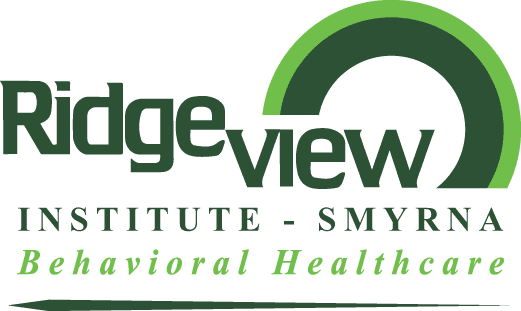Boundaries with Food, Relationships and Our Bodies
By Laura Maloch, RD, MS, Deborah Russo, Psy.D., Christine Engstrom, RD, MS
“When chaos and disorder occur in expectations and boundaries in a child’s life on the outside the skills needed to teach children to organize themselves on the inside are not learned, creating tension and confusion internally…. Frequently leading to the mishandling of food”
Newborns crave external limits and boundaries to help them regain a sense of internal control. They look to their caregiver to provide every need consistently. Even a two day old infant who wails and thrashes about when placed in a layette without being swaddled wants the feeling of protection and security that swaddling provides. Children crave limits from the outside so that they can learn the skills to regulate their response to situations and reduce tension and confusion on the inside. The key to effective parenting is knowing when to progressively give the child a task based upon their developmental readiness and provide the right amount of pressure to prevent unclear and ineffective boundaries. When a child experiences an extreme in parental pressure from too much to not enough, they react with fear and insecurity. The goal is to provide an environment that encourages learning basic life skills and develop a “you can do it” attitude.
Boundaries and discipline in childhood help children explore limits and gain mastery over their decisions. Children have two conflicting psychological needs; one is for independence and identity, the other for security and belonging. “Predictability is the essence of stability and stability is security for children.” Maloch 2004 Establishing boundaries provide a way for children to feel safe enough to explore, yet have the limits to feel safe and secure. Boundaries in feeding, means parents nourishing their children’s bodies by establishing routines and nurturing them with love and support. This sends a clear message teaching the child how to separate food from feelings. They intuitively learn eating is to meet physiological needs and experience different tastes while nurturing is something that comforts and supports their individuality.
It is often the case with eating disorders that the unrest, insecurity, and chaos experienced internally is projected onto food and weight in attempts to self-soothe and regulate emotions. However, this displacement provides only a temporary sense of control leading to repeating the eating behaviors as a way to push away feelings. Over time, food and eating replace and distance other ways of meeting needs so that real connection and intimacy become blurred and more difficult.
Tanya, an emotional eater says: “There is no end to the amount of cereal I can eat. There are boxes and boxes of sweet and crunchy goodness that makes everything seem to go away. I wish someone would stop me or could stop me from this madness. I just keep scooping, chewing and swallowing wanting more and more. My stomach hurts from the volume of all that food. I ask myself, “Why are you doing this? Why won’t you stop? It seems beyond my control.”
Looking back over her childhood, Tanya realized that her parents had high expectations and were not emotionally present. She was disconnected from her food and body and eating became a way to feel connected. She felt a huge void in her life. The lack of a consistent and stable presence in her early years prevented her from receiving the containment and validation needed to promote a secure and healthy sense of self, others, and relationship with food.
Her treatment modalities included individual, group and family therapy focused on examining the underlying reasons for her stressful eating and how her inner turmoil was displaced onto food. In therapy, she searched for the attention, creativity and freedom she was “hungry” for and developed ways of finding and accepting her power by using her voice. She explored her food cravings and ate foods she liked, learning to enjoy each eating experience with less guilt. Eating was no longer a reaction to strong emotions and stress; it was in response to tuning into her physical needs.
Emily, a restrictive eater, lived her mother’s dream of becoming a professional dancer. She lived and breathed ballet. She learned to discipline her body through grueling workouts and suppressed her appetite. She reports, “I never had the space to live my own dreams.” Her mother’s needs were so enormous that Emily had to shrink in response to her demands. Eating became restricted and ritualized while weight loss became a way to create an illusion of control.
Emily did not have the expansive boundaries in which to explore her own needs, desires and appetite. Her mother’s rigid, inflexible and consuming style prevented her from seeing herself separate from her daughter. Unknowingly, she projected her unmet needs onto Emily, creating an enmeshed relationship.
Emily’s treatment included learning relaxation techniques to help reduce the tension she held in her body especially at meal time. She became aware of how eating made her feel more energized and how to manage her anxiety around new food introductions and changes in eating patterns. She worked on separation and individuation of needs and wants different from her mother’s. She transformed fear of weight on her body to asserting the ‘weight’ of her voice. Therefore, developing a greater sense of self-esteem by owning and acknowledging her own power.
There are several tools that can bring about new learning to those struggling from all types of eating disorders. These include: managing food and feelings while developing and honoring individual boundaries, helping women fill in the gaps related to their basic needs, and establishing a framework for change that fosters separateness/closeness, limits/freedom, and security absent in childhood.
Women recovering from an eating disorder must learn to manage their internal frustrations related to growth and change by reaching for healthy attachments and intimacy rather than clinging to food. Treatment can be a long, but worthwhile process as individuals learn to acknowledge their power and strength and create positive change for their future.
All Vignettes were hypothetically composed to protect the privacy of individuals. Multiple references for this article came from Mealtime Madness; contact Laura Maloch for more information.
Deborah Russo, Ph.D., is a licensed clinical psychologist with twenty years experience working with eating disorders and associated problems. She is the Professional Outreach Representative for the Remuda Ranch Programs for Eating Disorders and is an Associate with the Anxiety and Stress Management Institute and Christian Psychiatric Services.
Christine Engstrom, MS, RD, LD, is a veteran Nutrition Therapist in the Atlanta area specializing in Eating Disorders. She is a team member at the Women’s Center at Ridgeview Institute and has a private practice in Smyrna.
Laura Maloch, MS, RD, LD, is a veteran Nutrition therapist in private practice for 22 years working with pediatric through college age. She is an Associate with the Anxiety and Stress Management Institute specializing in treatment of nutritional needs as eating disorders, sports nutrition, obesity, sensory issues, food phobias and behavioral food control issues with toddlers and young children. She is the author of the soon to be published book Mealtime Madness written to help parents understand different temperaments in the household and their effects on eating behavior.
Ridgeview Institute is a private behavioral health care system with inpatient, partial hospitalization, and intensive outpatient programs for children, adolescents, adults and seniors with psychiatric and addictive problems. We are located at 3995 South Cobb Drive, Smyrna, Georgia 30080. For more information about Ridgeview’s programs and services, call (770) 434-4567 or 1 (800) 329-9775.
For more information about the Women’s Center at Ridgeview Institute, visit our website at https://ridgeviewinstitute.com/ or contact the Access Center at (770) 434-4567.

